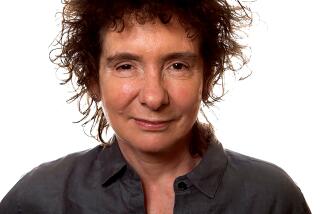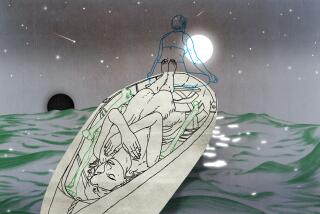For Serious Seekers, an Expert Guide to Revered Buddhist Text
- Share via
Would the Tibetan Book of the Dead by any other name be as popular? That’s one question that Francesca Fremantle’s thoughtful and intricate “Luminous Emptiness” brings to mind.
The real title for what we call the Tibetan Book of the Dead is the less melodic “The Great Liberation Through Hearing During the Bardo.” Fremantle’s book attempts to be no less than a guide for maintaining one’s perceptions and awareness during the bardo (or transitional state between life and death) in which she shows readers the complicated process of understanding one of Buddhism’s most sacred texts.
One surprising aspect of Fremantle’s revelations about the Tibetan Book of the Dead, written by “the precious guru” Padmakara in the 8th century, is that the book is not so much a guide to the afterlife as a guide for the stages of life in preparation for death. Death, she asserts, is not the end of existence but a passage into a more evolved state of consciousness, similar to what is achieved in transcendent meditative states: “After death, without the grounding influence of the physical body, events will overtake us with such speed and intensity that there will be no chance to stop and meditate. To be of use, meditation must become part of our innermost nature. That is why this is a book of the living as well as a book of the dead.”
“Luminous emptiness” is the space between life and death before rebirth. “Space is emptiness and luminosity: luminous emptiness,” Fremantle says. “Because it is empty, nothing exists, yet because it is luminous, everything arises from it.” Though this description might seem elusive--and, indeed, it is this language that makes Eastern religions hard for many Western critics to grasp--it describes a state of spiritual bliss with abstract language that forces the reader to let go of a rational, linear thought process.
A British scholar of Sanskrit and Tibetan, Fremantle helped translate the Tibetan Book of the Dead in the 1970s with her teacher, Chogyam Trungpa, to whom this book is dedicated. Fremantle is a student of Indian Buddhism--the purest form of which, according to her, is practiced in Tibet. The struggle to arrive at a state of enlightenment is palpable in the meticulous and detailed manner in which Fremantle lays out its spiritual path. She begins with a concise explanation of the fundamentals of Buddhism and then moves on to the more complex ideas of karma, self-deceit, the immaterial, the ego and consciousness.
Fremantle acts as our intellectual guide, unraveling the book’s complicated and powerful imagery and abstract messages. For example, she presents this daunting passage dealing with the moment of death:
*
Now the bardo of dying is dawning upon me,
I will abandon grasping, attachment and the all-desiring mind,
Enter undistracted the clear essence of instructions,
And transfer into the space of unborn self-awareness,
As I leave this conditioned body of flesh and blood
I will know it to be a transitory illusion.
*
Then she explains how this passage treats dying as a transference, not an end, like moving from “one place to another,” just as one would move from one room in a house into another. In skillfully unraveling such knotted imagery and symbolic meaning, Fremantle points to the meanings that each passage contains.
Her description of Buddhism makes no bones about it: “Buddhism is a religion of practical methods for spiritual realization.” Every religion might make the same claim, but Fremantle argues that Buddhism provides the unique ability to provide those steps without being dogmatic. “[Buddhism] contains many different views and formulations in response to people’s needs and a huge variety of techniques to suit their inclinations and capabilities. Some of these may appear contradictory, yet they do not teach different truths; they present different points of view from which to approach the same truth.”
“Luminous Emptiness” differs from some Western books on religion--it is not an anthropological study, or even an academic explanation, that tries to simplify concepts for an unfamiliar general audience. Instead, this book is a deeply heartfelt guide to spiritual fulfillment through Buddhism, and the work of a believer who has studied her tradition with academic intensity and whose faith has emerged on the other end, undiminished.
The reader who comes to “Luminous Emptiness” with a predisposition toward believing in Buddhism, and a desire to understand how to use the Tibetan Book of the Dead as a way of furthering that knowledge, will be rewarded. However, readers who come with only a passing interest in the subject and seek a convincing argument for taking on the Tibetan Book of the Dead will perhaps find Fremantle’s work less than illuminating. Not a book for the casual reader, “Luminous Emptiness” provides interested seekers with a journey through the Tibetan Book of the Dead, and Fremantle is an expert guide.
*
Ruth Andrew Ellenson writes about religion, arts and culture for the Forward, People magazine and the Jewish Journal of Los Angeles.
More to Read
Sign up for our Book Club newsletter
Get the latest news, events and more from the Los Angeles Times Book Club, and help us get L.A. reading and talking.
You may occasionally receive promotional content from the Los Angeles Times.








